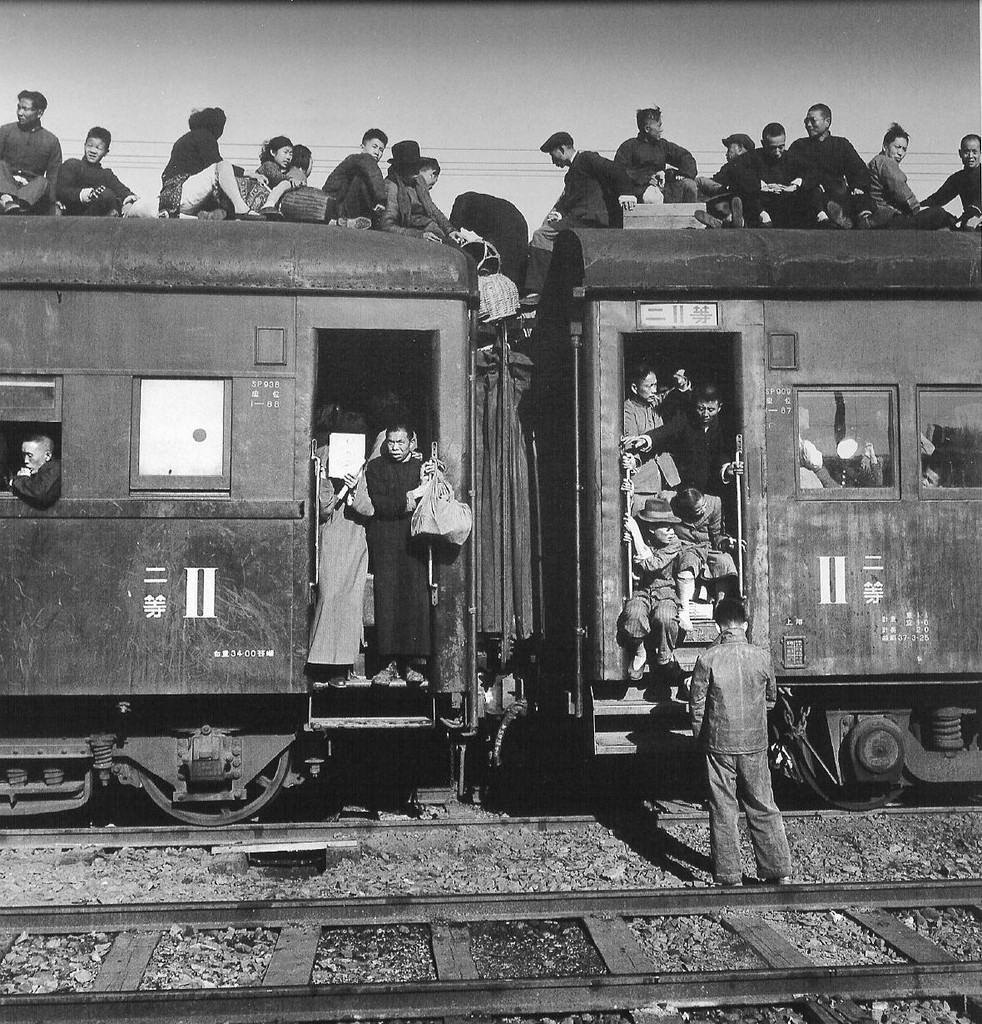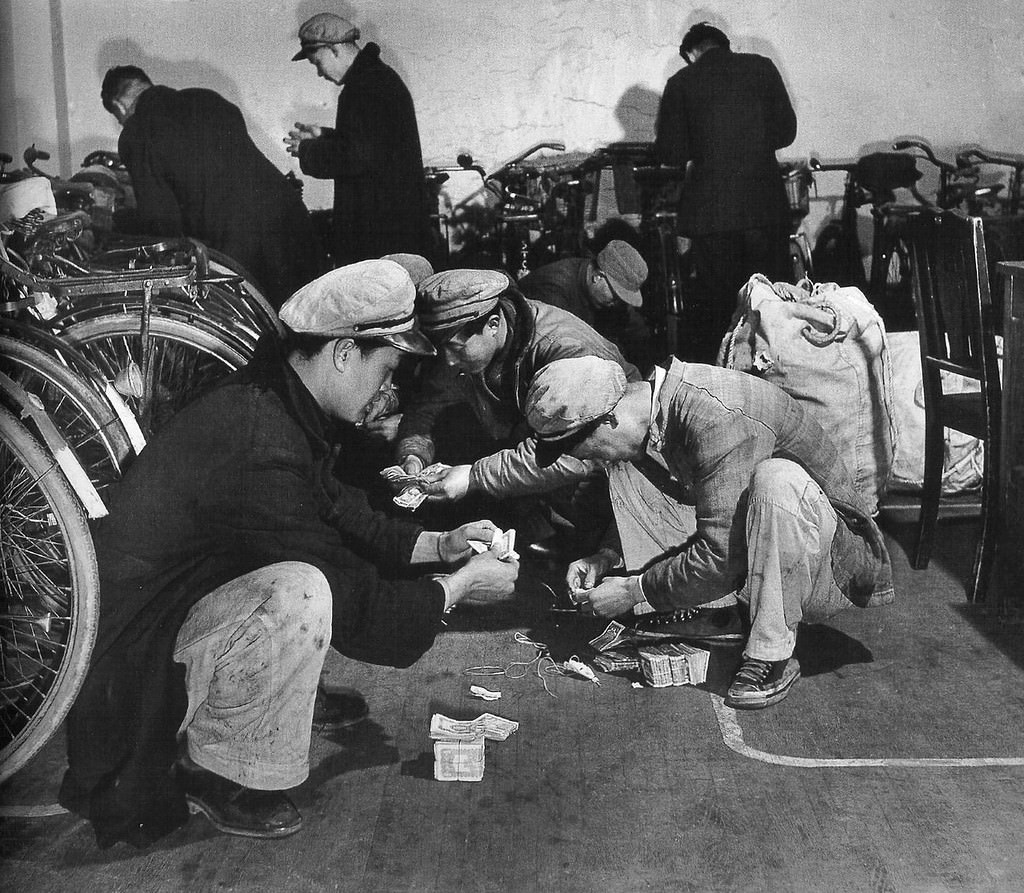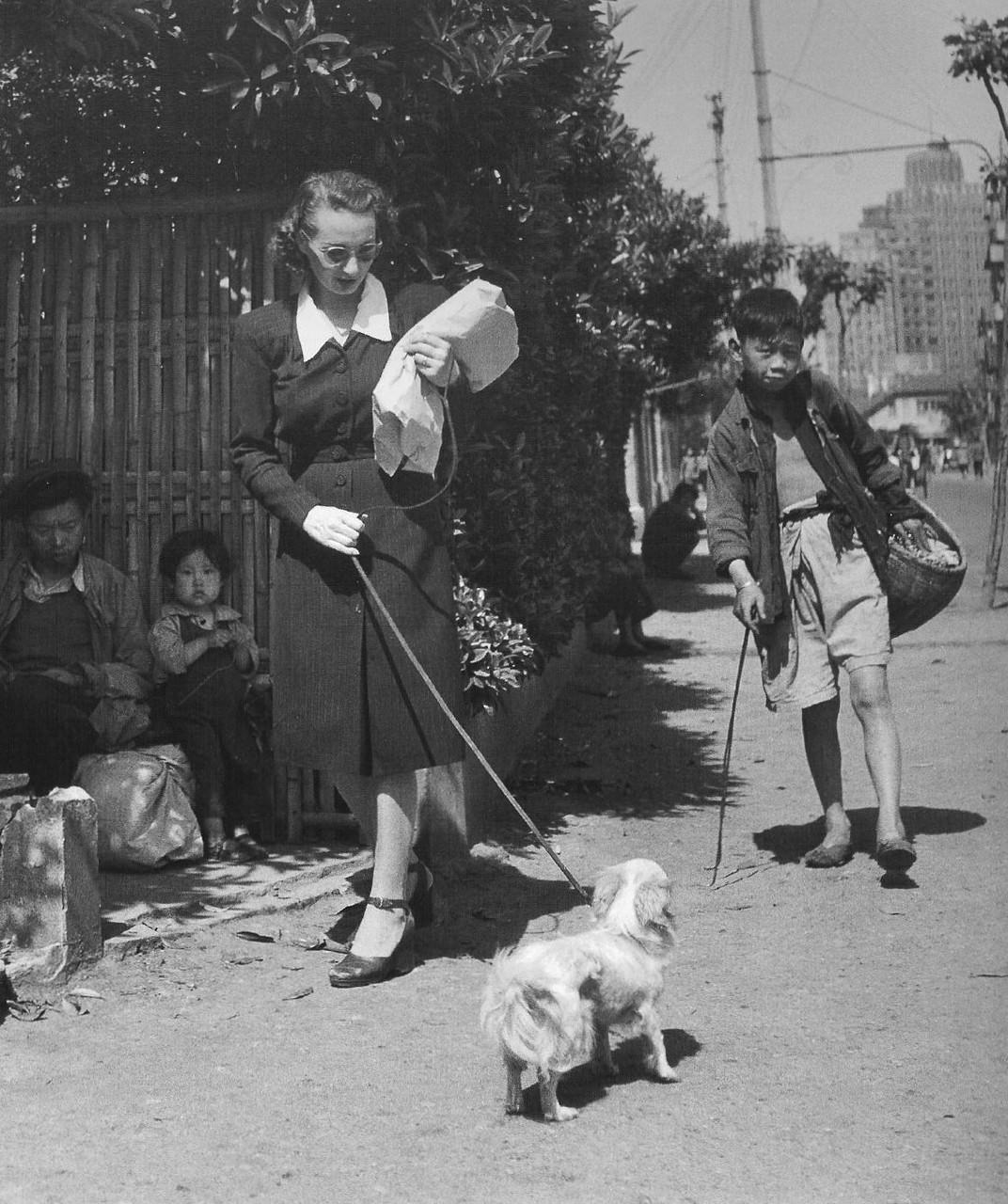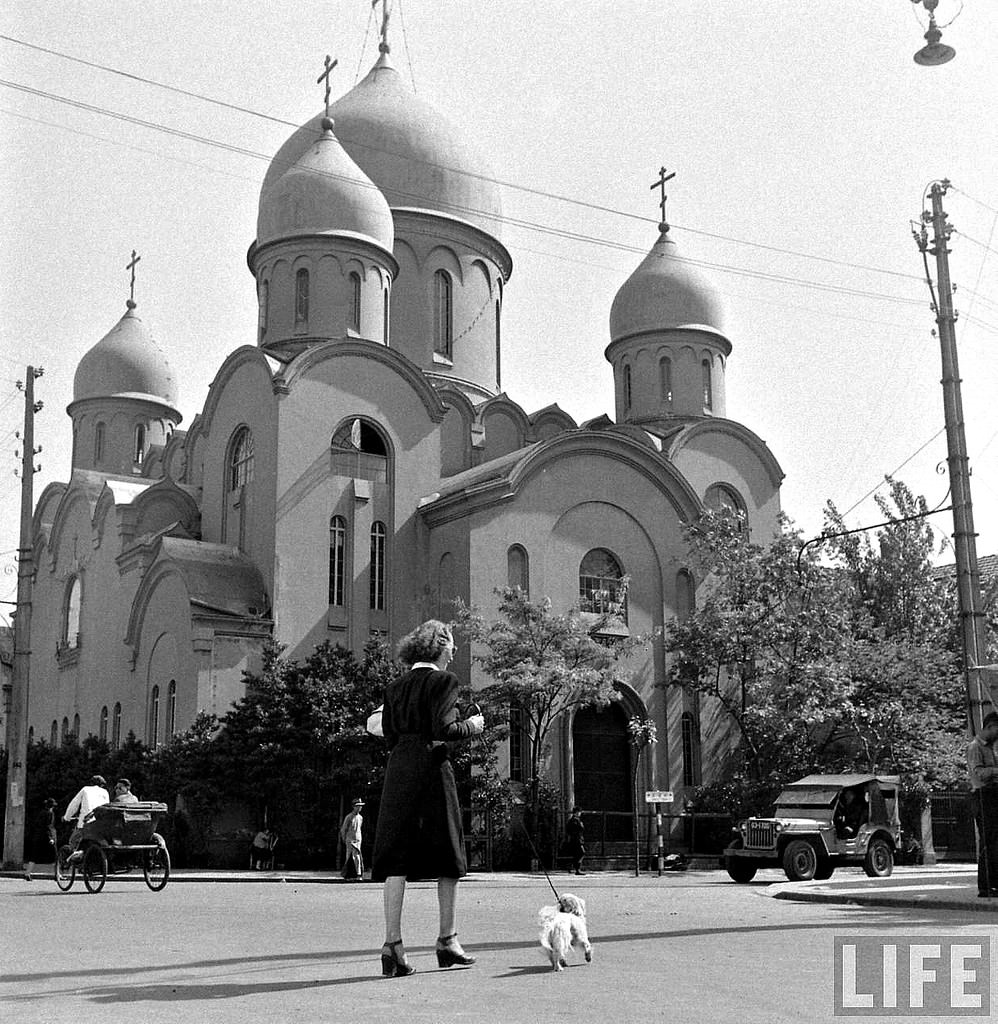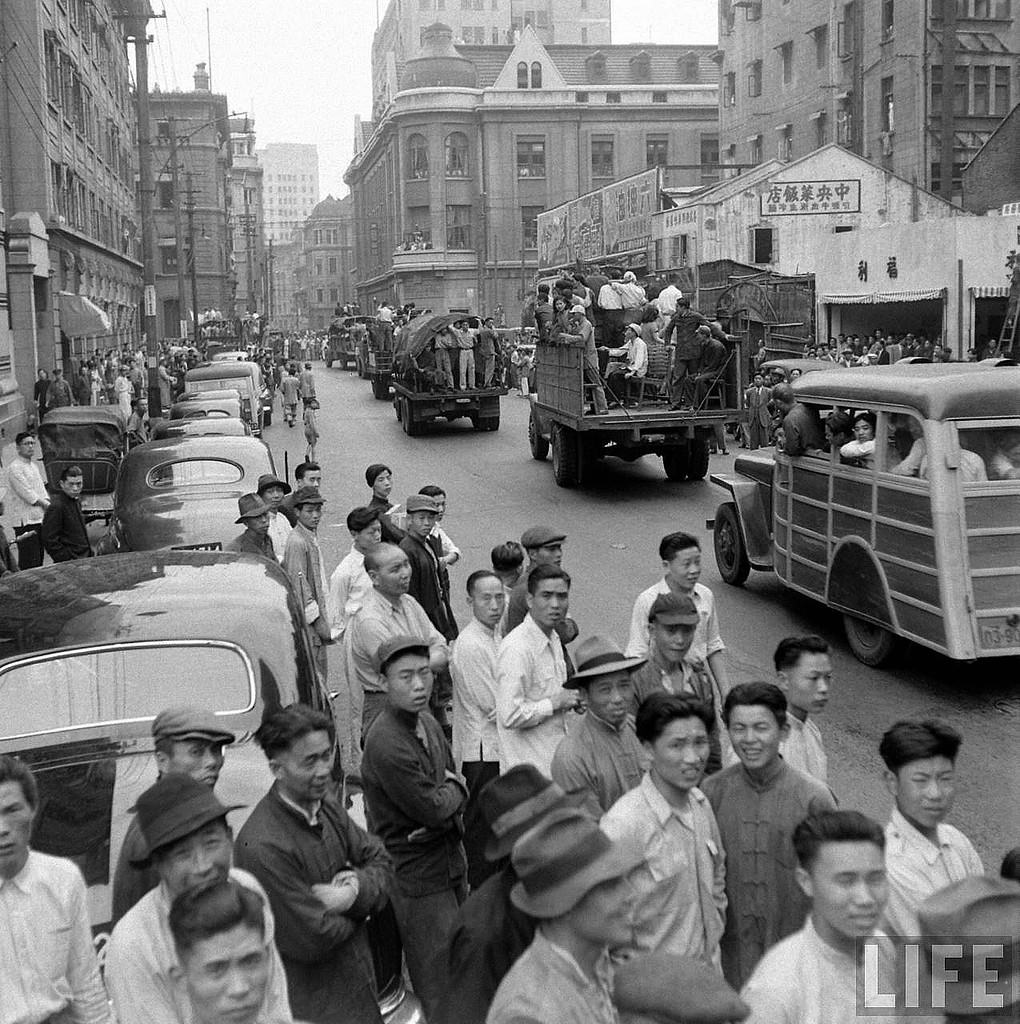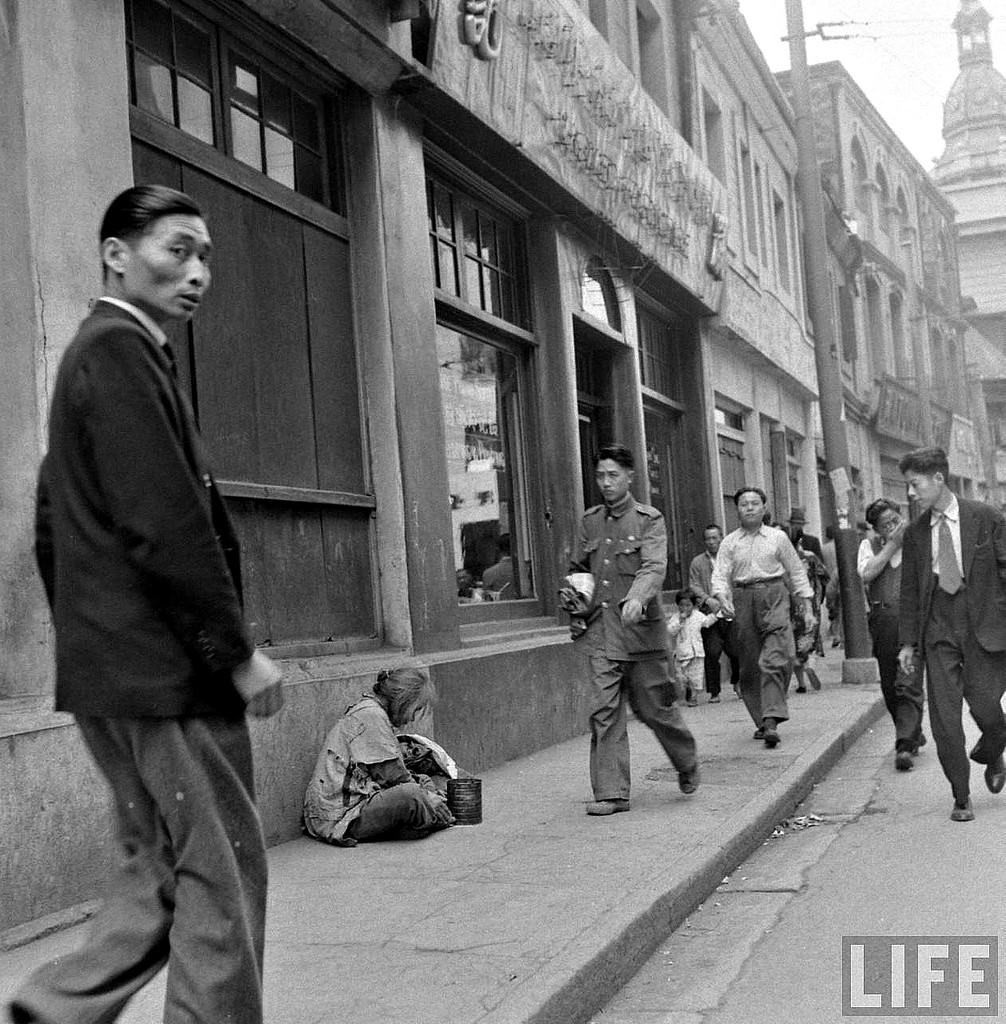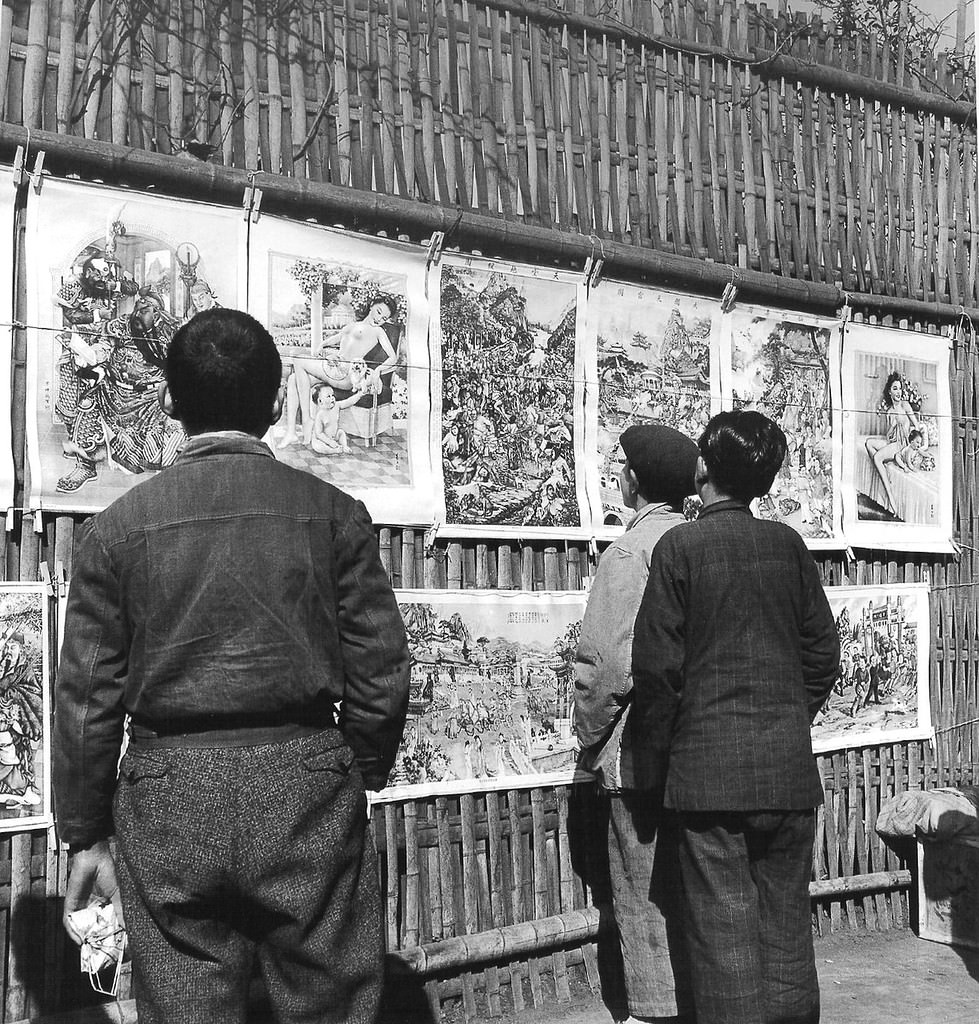In the late 1940s, photographer Jack Birns captured a unique and striking view of Shanghai during a turbulent time in Chinese history. His photographs, taken from 1947 to 1949, show a city in the midst of significant change. These images offer a rare glimpse into what has been called “the last days of Shanghai.”
Shanghai was China’s largest city at the time, with a population of six million people. It was a major economic hub, contributing about one-third of the nation’s GDP. The city was a melting pot of cultures, with a strong Western influence visible in its architecture, businesses, and lifestyle. American neon-lit dive bars, English signs, and Western expatriate communities were common sights. Despite its economic importance, Shanghai was caught in the crossfire of the Chinese Civil War, with the nationalist government struggling against the advancing communist forces led by Mao Zedong.
The Western Influence
Birns’ photographs reveal the strong presence of Western culture in Shanghai. Billboards advertising Western products like cigarettes and stockings were everywhere. Businesses promoted their offerings in English, catering to the large expatriate community. In June 1949, there were over 32,000 foreigners from more than 50 nationalities living in Shanghai. This included 3,905 British, 2,547 Americans, 1,442 French, and 1,832 Portuguese citizens. These expatriates continued their daily lives amid the chaos, seemingly untouched by the political upheaval around them.
Read more
While the expatriates lived relatively comfortably, many Chinese people faced severe hardships. Birns’ photos depict refugees fleeing the countryside, caught between rival armies. These refugees often ended up in Shanghai, only to find life there equally challenging. They lived in makeshift shelters, struggled to find food, and faced constant uncertainty.
The Reality of War
Birns also captured the harsh realities of war. His photographs show soldiers patrolling the streets, urban protests, and even street executions. These images highlight the tension and violence that were part of daily life in Shanghai during this period. The nationalist government led by Chiang Kai-shek was losing ground to Mao’s communists, and this struggle was evident in the streets of the city.
One of the more unsettling aspects of Birns’ work is his documentation of prostitution in Shanghai. Many women, driven by poverty and desperation, turned to prostitution as a means of survival. Birns’ photos show these women standing on street corners or waiting in dark alleys, a stark reminder of the city’s social problems during this time.
Despite the turmoil, daily life in Shanghai continued. Birns documented vibrant street scenes filled with vendors, shoppers, and children playing. These images provide a sense of normalcy amid the chaos, showing that even in difficult times, people found ways to carry on with their lives. The bustling streets, crowded markets, and lively interactions captured by Birns paint a picture of a city that was still full of life.





